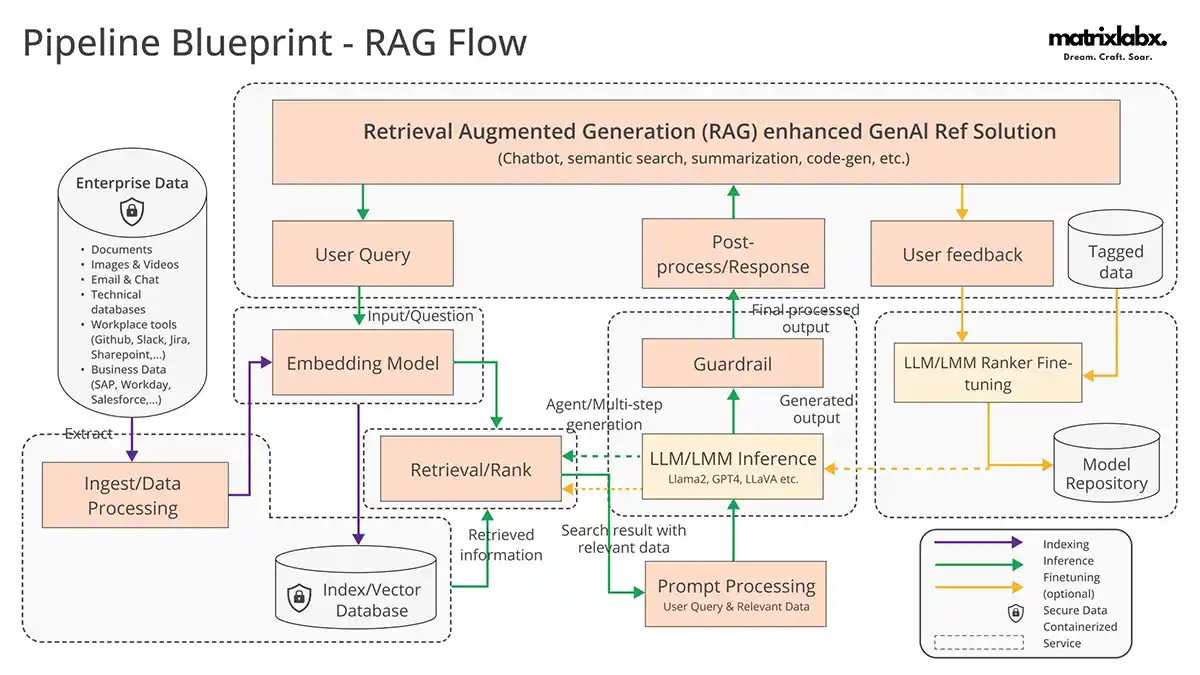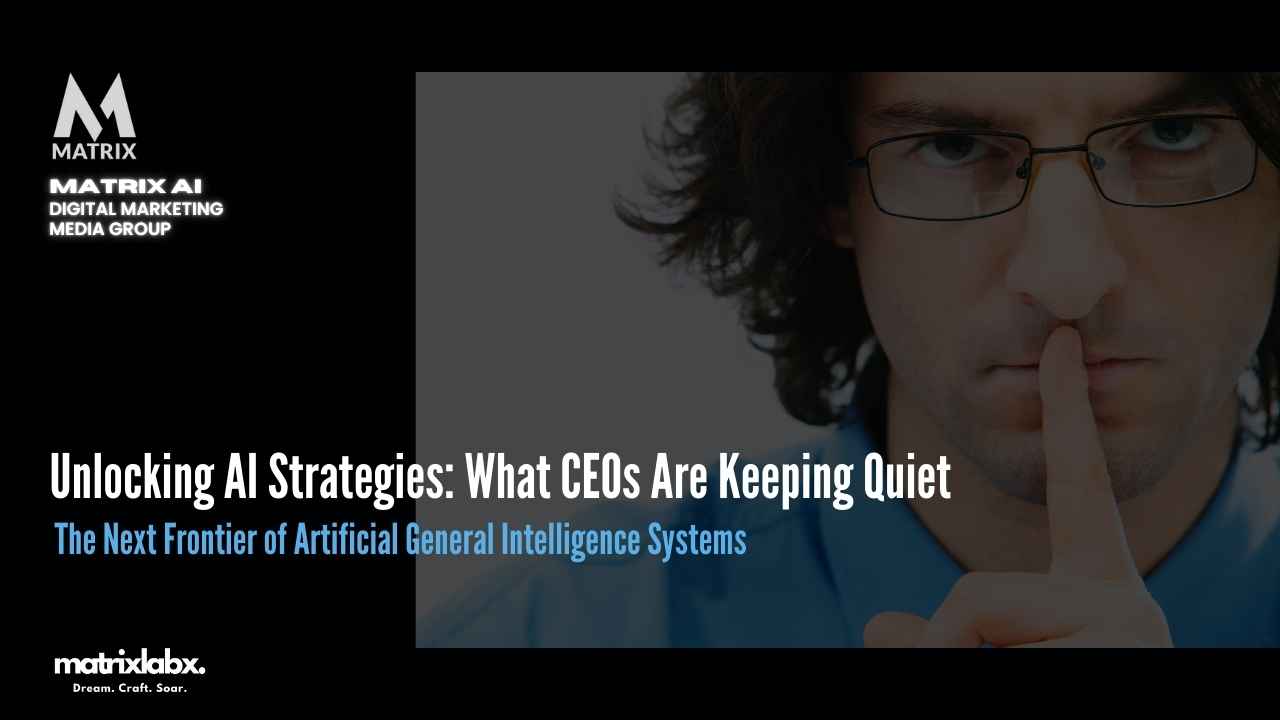Unlocking AI Strategies: CEOs Secrets
Unlocking AI Strategies: CEOs’ secrets have never been disclosed until now.
The turnover rate for chief marketing officers (CMOs) has been a persistent challenge in the corporate landscape. Many CMOs hold their positions for significantly shorter periods than other C-suite executives.
On average, a CMO’s tenure is around 40 months, much lower than the nearly 80 months for CEOs. This high turnover rate reflects the intense pressure, rapidly evolving responsibilities, and shifting expectations placed on marketing leaders in an era of digital transformation, data-driven decision-making, and heightened competition.
One key reason for CMO turnover is the difficulty of aligning marketing goals with broader organizational objectives. CMOs are often tasked with driving growth, enhancing brand visibility, and managing customer experience, yet they may face conflicting priorities from other departments.
When marketing initiatives do not immediately translate to measurable business outcomes, such as increased revenue or market share, companies may prematurely evaluate a CMO’s effectiveness, leading to leadership changes.
The evolving nature of marketing technology also plays a significant role in CMO turnover. As businesses invest heavily in AI, data analytics, and automation, CMOs must quickly adapt and integrate these tools into their strategies.
This requires technical proficiency and a deep understanding of customer behavior and market trends. Organizations frequently replace CMOs by pursuing candidates with more advanced digital skills or a fresh perspective on leveraging new technologies, creating a cycle of frequent leadership changes.
Additionally, the high expectations for CMOs to be strategic visionaries and exceptional leaders can lead to burnout. They are expected to balance long-term brand building with immediate performance metrics, such as customer acquisition and retention.
The pressure to deliver quick wins in highly competitive markets often leaves CMOs with little room to implement sustainable, impactful strategies. This relentless pace contributes to the short tenures and highlights the need for organizations to support better and define the role of the CMO to ensure longevity and success.
The Silent Revolution: AI’s Hidden Impact
Matrix Marketing Group and MatrixLabX provide AI-driven marketing solutions for fast-paced industries. Our intelligent systems automate and optimize marketing processes, delivering high-performance results and strategic advantage at a fraction of the cost.
The Silent Revolution: AI’s Hidden Impact
Did you know that 84% of CEOs believe AI will significantly change how they do business in the next five years, yet only 27% of their teams feel prepared to embrace this change?
This statistic unveils a critical gap in communication and readiness that could spell trouble for organizations that act slowly.
As a CMO, understanding this hidden dimension of AI’s integration is crucial for aligning your marketing strategy with the broader business goals.
Unmasking the Concerns: What You Need to Know
AI’s rapid adoption has left many marketing teams grappling with uncertainties. Concerns about data privacy, algorithmic transparency, and the potential for job displacement are at the forefront.
Addressing these concerns openly is essential to building trust and ensuring smooth AI implementation.
Transparency in how AI tools are selected, how they handle data, and their impact on current roles can alleviate anxiety and foster a culture of innovation.
Evidence-Based Recommendations for CMOs
To bridge the gap between executive vision and team execution, conduct AI literacy workshops to enhance your team’s understanding of AI’s capabilities and limitations.
Invest in tools that prioritize ethical AI usage, ensuring privacy and fairness are embedded in every algorithmic decision.
Encourage a cross-departmental dialogue to align AI strategies with your marketing objectives, allowing for a cohesive approach that leverages AI’s full potential while mitigating risks.
By proactively addressing these concerns and providing clear, evidence-based guidance, CMOs can build trust within their teams and position their organizations to thrive in an AI-driven future.
What CEOs Aren’t Telling Their Teams About AI

Unveiling the Silence: The Gap Between Leadership and Innovation
Artificial Intelligence (AI) is revolutionizing industries, yet many CEOs still need to be reticent about the full extent of its impact on their organizations, leaving CMOs in a curious position. The main reason behind this silence often lies in the uncertainty and complexity associated with AI’s capabilities and implications.
CEOs need to be more apprehensive about sharing insights on AI due to concerns about disruption, ethical considerations, and the unpredictable nature of AI development. This creates a gap where marketers must navigate the challenges of integrating AI technologies without comprehensive guidance from their leadership.
The CMO’s Quest: Harnessing AI’s Potential
For CMOs, this lack of transparency presents a dual challenge and opportunity to innovate.
Without explicit leadership directions, CMOs are uniquely positioned to explore and leverage AI to enhance customer engagement, optimize marketing strategies, and drive data-driven decision-making.
The potential of AI in personalizing customer experiences, predicting trends, and automating repetitive tasks is immense. By understanding ‘what’ AI can do, ‘why’ it matters, and ‘where’ to apply it, CMOs can become pioneers in their fields, crafting compelling narratives and strategies that captivate audiences and push the envelope of what’s possible in marketing.
This creates a dynamic environment where curiosity, adaptability, and proactive exploration become invaluable assets.
Need Help with Poor Marketing ROI?
Facing Disappointing Results?
In today’s fast-paced marketing landscape, Chief Marketing Officers (CMOs) are constantly pressured to demonstrate results and justify their investments.
Yet, despite countless hours and substantial budgets poured into campaigns, poor marketing ROI remains a haunting reality.
As demands for accountability increase, struggling with ineffective campaigns can feel like an insurmountable hurdle, leaving your brand behind the competition.
Why Poor ROI Hurts More Than You Think
Poor marketing ROI signifies lost expenses and missed opportunities for growth and innovation. Every dollar invested needs to yield measurable results to achieve strategic goals.
Chronic underperformance can erode stakeholder trust, diminish team morale, and stifle the creative potential to keep your brand at the forefront of the industry.
The pressure to constantly optimize and adapt might lead to hasty decisions, further impeding meaningful progress.
Discover AI-Driven Marketing Solutions
Enter our AI marketing solutions—engineered to transform your ROI from lackluster to industry-leading.
By harnessing the power of sophisticated algorithms and data analytics, we empower you to target audiences with unparalleled precision, deliver personalized content, and optimize campaigns in real time.
Imagine unlocking insights that enable smart decisions, spearheading data-backed creativity, and finally gaining the results you’ve been hoping for.
Let our AI solutions pave the path to consistent growth and greet every marketing challenge with renewed confidence. Say goodbye to ineffective strategies; embrace a future where high marketing ROI isn’t just a goal but a reality.
Unveiling the Hidden AI Agenda in the C-Suite

In today’s rapidly evolving digital landscape, the interplay between AI and market strategies forms a complex web that is both promising and daunting. Industry experts note that what is often left unsaid in boardrooms is where the true intrigue lies.
Dr. Anna Robbins, a renowned technology strategist, highlights a growing trend: “CEOs are increasingly relying on AI to predict market shifts and consumer behavior, yet many choose to under-communicate this reliance to their teams.”
Behind the Curtain: The Unspeakable Impact of AI on Marketing Strategies
Michael Torres, a Chief Marketing Officer at a leading multinational, illuminates this strategic opacity: “AI is fundamentally reshaping how we understand customer journeys.
Yet, much of its utility remains under lock and key, partly because of its role in edging out conventional roles within the marketing department.”
According to Torres, the subtlety with which AI is integrated into decision-making keeps team dynamics stable, albeit at the cost of transparency.
The Future Frontiers: What AI Could Mean for Team Dynamics
A futurist and organizational psychologist, Sarah Elwood, suggests that the silence surrounding AI’s full capabilities may soon lift. “AI’s potential is boundless, and, in time, transparency will become necessary.
The competitive edge for teams will lie in understanding and harnessing these tools, rather than solely relying on executive fiat.”
Elwood’s insights invite curiosity about the futuristic transformations awaiting teams abreast of AI trends, hinting at a new era of informed and collaborative leadership.
Unveiling the AI Veil: What CEOs Aren’t Telling Their Teams

Artificial Intelligence (AI) is revolutionizing industries, yet many leaders are tight-lipped about its full potential.
A savvy approach fosters open dialogue, transparency, and education about AI amongst teams while strategically deploying it to stay competitive.
Here, we delve into three less-known brands that have successfully harnessed AI by sharing this knowledge with their workforce: Nexelis Biotech, EcoMatters Solutions, and TruTech Innovations.
Cultivating Innovation with AI
Nexelis Biotech, a cutting-edge biotechnology firm, is a shining example.
Its CEO has demystified AI by offering workshops that empower employees to explore AI-driven solutions directly related to their roles.
This initiative boosts morale and spurs innovation, culminating in developing a groundbreaking diagnostic tool. Employees feel valued, knowing how the technology will transform their tasks, alleviating fears about job security.
Enhancing Sustainability Through AI
Similarly, EcoMatters Solutions, a sustainability-focused company, has integrated AI into its core ethos. The CEO shared the vision of using AI to predict environmental changes, motivating teams to engage in modeling projects enthusiastically.
By openly discussing AI’s potential, EcoMatters has improved its product offerings and significantly reduced operational costs. The transparent approach has galvanized employees to align their objectives with sustainability goals, fostering a united front across the organization.
Empowering Intelligent Marketing with Multi-Agent RAG Systems
A New Era of AI with Matrix Marketing Group and MatrixLabX
Matrix Marketing Group, in partnership with MatrixLabX, is redefining the future of marketing through next-generation AI capabilities powered by Multi-Agent RAG Systems. This revolutionary approach elevates traditional AI, providing brands with an adaptable, deeply intelligent system for solving marketing challenges and seizing opportunities. Learn more.
Streamlining Operations with Transparent AI Adoption
Lastly, TruTech Innovations, in the tech-prowess realm, embraced the idea of AI democratization within its workforce.
The CEO encouraged the creation of cross-functional teams to explore AI’s myriad applications. Employees gained insights into how AI can streamline operations, enhance productivity, and reduce redundancy.
This initiative has led to the development of proprietary artificial neural network software that optimizes workflow processes.
The untapped potential of AI lies not just in the technology itself but in how CEOs communicate it to their teams.
Companies like Nexelis Biotech, EcoMatters Solutions, and TruTech Innovations exemplify how transparent AI narratives can drive success by fostering curiosity, providing education, and encouraging exploration. The secret isn’t in the silence; it’s in sharing the AI story with those who shape the future.
Introduction to the Orchestra AI Framework
As Artificial Intelligence continues to permeate industries at an unprecedented pace, many CEOs are grappling with how to communicate its potential and implications within their organizations effectively.
This is where the Orchestra AI Framework comes into play. It provides a structured approach to leveraging AI insights and capabilities.
What CEOs Aren’t Telling Their Teams About AI is crucial—it’s not just about automation but transformation.

Step 1: Understanding AI’s True Potential
The first step in this matrix involves understanding AI beyond its buzzword status.
Teams must explore how AI can unlock new value chains and business models, which requires diving deeper into its potential applications in strategic decision-making.
CEOs must demystify AI, framing it not as a threat but a significant opportunity for innovation and differentiation.
This requires transparent conversations backed by real-life case studies demonstrating successful AI integration.
Step 2: Building AI Literacy
With the groundwork laid, the next phase focuses on building AI literacy across all levels of the organization.
Employees should be equipped with knowledge beyond technical jargon, helping them see AI as a tool for enhancing their roles rather than replacing them.
Workshops, interactive seminars, and cross-departmental exchanges can foster a culture of curiosity and learning.
This will ensure that teams are empowered to contribute to AI-driven projects, seeing them as an enhancement to their skill sets.
Step 3: Creating a Collaborative Vision
Once the team is literate in AI concepts, it’s essential to co-create a vision where AI aligns with the company’s strategic goals.
CEOs should encourage collaborative sessions where all voices contribute to designing an AI roadmap, ensuring it reflects diverse insights and expertise. This empowers employees to take ownership of AI initiatives, fostering a sense of inclusion and investment in AI’s trajectory within the organization.
Embracing these steps in the AI Matrix can transform uncertainty into opportunity, ensuring that AI becomes a catalyst for growth and innovation rather than a divisive topic.
By sharing what often remains unsaid, CEOs can inspire their teams to their fullest potential and confidently navigate the future.
The Unspoken AI Revolution: What CEOs Aren’t Sharing

Artificial Intelligence (AI) is taking center stage in a rapidly evolving technological landscape, yet leaders are keeping untold stories and strategies under wraps.
While AI promises increased efficiency and innovation, CEOs are often reluctant to share all the details about its integration with their teams. This article delves into the hidden narratives behind AI’s rise and its potential to reshape industries.
The Strategic Silence
Many CEOs must communicate more about AI’s impact on their company’s future to maintain a competitive edge.
By controlling the flow of information, they aim to strategically deploy AI solutions across various departments without causing unnecessary concern or speculation among employees.
This measured approach allows businesses to experiment and refine their AI strategies while minimizing disruption and anxiety.
Navigating AI’s Ethical Landscape
Addressing the ethical implications of AI is an unspoken urgency that is often bypassed in open discussions. Executives are quietly wrestling with the responsibility of ensuring unbiased data and transparent algorithms to prevent unintended consequences.
The ethical deployment of AI safeguards the company’s reputation and builds trust among customers and employees.
Empowering Teams with AI
Despite their tight-lipped stance, forward-thinking CEOs recognize the importance of empowering their teams to embrace AI.
They invest in upskilling and reskilling initiatives to prepare employees for a future where human-AI collaboration becomes the norm.
Encouraging creativity and adaptability enables teams to seamlessly integrate AI into their workflows, fostering a culture of innovation and resilience.
This nuanced dance between transparency and concealment highlights the complexities of navigating AI’s impact.
As AI advances, open conversations become increasingly pivotal in leveraging its full potential while ensuring ethical and sustainable growth for organizations.
CEOs are already moving to an AI-first blueprint from systems like Orchestra AI suite, a powerful collection of 42 purpose-built AI agents tailored to meet the diverse needs of modern marketers. The Orchestra suite redefines marketing automation by delivering insights, streamlining workflows, and driving high-impact results for small and mid-sized companies.
Orchestra’s AI uses a compound AI agent architecture designed to integrate multiple specialized AI agents into a cohesive system, enabling the execution of complex tasks through coordinated interactions. This approach enhances the capabilities of individual AI models by allowing them to work collaboratively, thereby addressing multifaceted challenges more effectively.
Orchestra AI acts as the conductor, while each agent acts like a specialized “musician” and is designed to function autonomously in a compound agent environment. Together, these agents contribute to a seamless, holistic marketing performance, just as musicians contribute to a powerful Orchestra.
MatrixLabX’s Compound AI Agent Architecture consists of specialized AI agents tailored to specific functions, an orchestration layer managing agent interactions, and data integration and preprocessing mechanisms ensuring consistent input. Feedback and learning mechanisms allow the architecture to learn from outcomes and refine processes over time.
In this era, we witness the remarkable advancement of Artificial Intelligence (AI), surpassing human cognitive abilities. This groundbreaking achievement initiates a continuous cycle of self-improvement, where each iteration amplifies intelligence exponentially. This accelerated progress transcends the boundaries of imagination, transforming our world instantaneously.
We stand on the brink of an unprecedented era when the lines between humans and machines blur into a singularity of unimaginable potential.
For marketers, this isn’t just a glimpse of the future—it’s a new playing field in which the rules of creativity, engagement, and connection are being rewritten.
Are you ready to seize this opportunity and lead your brand into the future?



